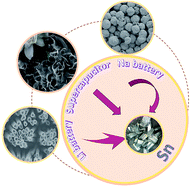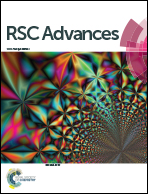Tin-based nanomaterials for electrochemical energy storage
Abstract
Electrochemical energy storage has received a lot of attention due to the common recognition of sustainable development. Nanomaterials are ideal candidates as electrode materials in different fields of energy storage devices, offering favorable transport features, high surface to volume ratio and excellent physicochemical properties. This review is focused on the recent progress in nanostructured Sn-based electrode materials, including Sn, Sn alloys, Sn oxides (SnOx, x = 1, 2), dichalcogenides (SnSx, x = 1, 2) and oxysalts for lithium/sodium-ion batteries and supercapacitors. Sn-based compounds, including SnO, SnO2, MSnxOy (M = Co, Ca, Zn, Mo; x = 1, y = 3), SnS, SnS2, Sn3P4, SnC2O4, SnP2O7, etc., and their composites, possess various valence states and exhibit rich chemistry. They are very attractive candidates for efficient electrochemical energy storage systems because of their unique physicochemical properties, such as conductivity, mechanical and thermal stability, and cyclability. In this review, we aim to provide a systematic summary of the synthesis, modification, and electrochemical performance of nanostructured Sn-based compounds, as well as their energy storage applications in lithium/sodium-ion batteries (LIB/SIB), and supercapacitors. The relationship between nanoarchitectures and electrochemical performances, as well as the related charge-storage mechanism is discussed. Moreover, remarks on the challenges and perspectives of Sn-containing compounds for further development in electrochemical energy storage applications are proposed. This review sheds light on the sustainable development of advanced rechargeable batteries and supercapacitors, with a focus on Sn-based nanomaterials.



 Please wait while we load your content...
Please wait while we load your content...